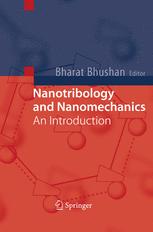

Most ebook files are in PDF format, so you can easily read them using various software such as Foxit Reader or directly on the Google Chrome browser.
Some ebook files are released by publishers in other formats such as .awz, .mobi, .epub, .fb2, etc. You may need to install specific software to read these formats on mobile/PC, such as Calibre.
Please read the tutorial at this link: https://ebookbell.com/faq
We offer FREE conversion to the popular formats you request; however, this may take some time. Therefore, right after payment, please email us, and we will try to provide the service as quickly as possible.
For some exceptional file formats or broken links (if any), please refrain from opening any disputes. Instead, email us first, and we will try to assist within a maximum of 6 hours.
EbookBell Team

0.0
0 reviewsThe recent emergence and proliferation of proximal probes, e.g. SPM and AFM, and computational techniques for simulating tip-surface interactions has enabled the systematic investigation of interfacial problems on ever smaller scales, as well as created means for modifying and manipulating nanostructures. In short, they have led to the appearance of the new, interdisciplinary fields of micro/nanotribology and micro/nanomechanics.
This volume serves as a timely, practical introduction to the principles of nanotribology and nanomechanics and applications to magnetic storage systems and MEMS/NEMS. Assuming some familiarity with macrotribology/mechanics, the book comprises chapters by internationally recognized experts, who integrate knowledge of the field from the mechanics and materials-science perspectives. They cover key measurement techniques, their applications, and theoretical modelling of interfaces, each beginning their contributions with macro- and progressing to microconcepts.
After reviewing the fundamental experimental and theoretical aspects in the first part, Nanotribology and Nanomechanics then treats applications. Three groups of readers are likely to find this text valuable: graduate students, research workers, and practicing engineers. It can serve as the basis for a comprehensive, one- or two-semester course in scanning probe microscopy; applied scanning probe techniques; or nanotribology/nanomechanics/nanotechnology, in departments such as mechanical engineering, materials science, and applied physics.
With a Foreword by Physics Nobel Laureate Gerd Binnig
Dr. Bharat Bhushan is an Ohio Eminent Scholar and The Howard D. Winbigler Professor in the Department of Mechanical Engineering, Graduate Research Faculty Advisor in the Department of Materials Science and Engineering, and the Director of the Nanotribology Laboratory for Information Storage & MEMS/NEMS (NLIM) at the Ohio State University, Columbus, Ohio. He is an internationally recognized expert o